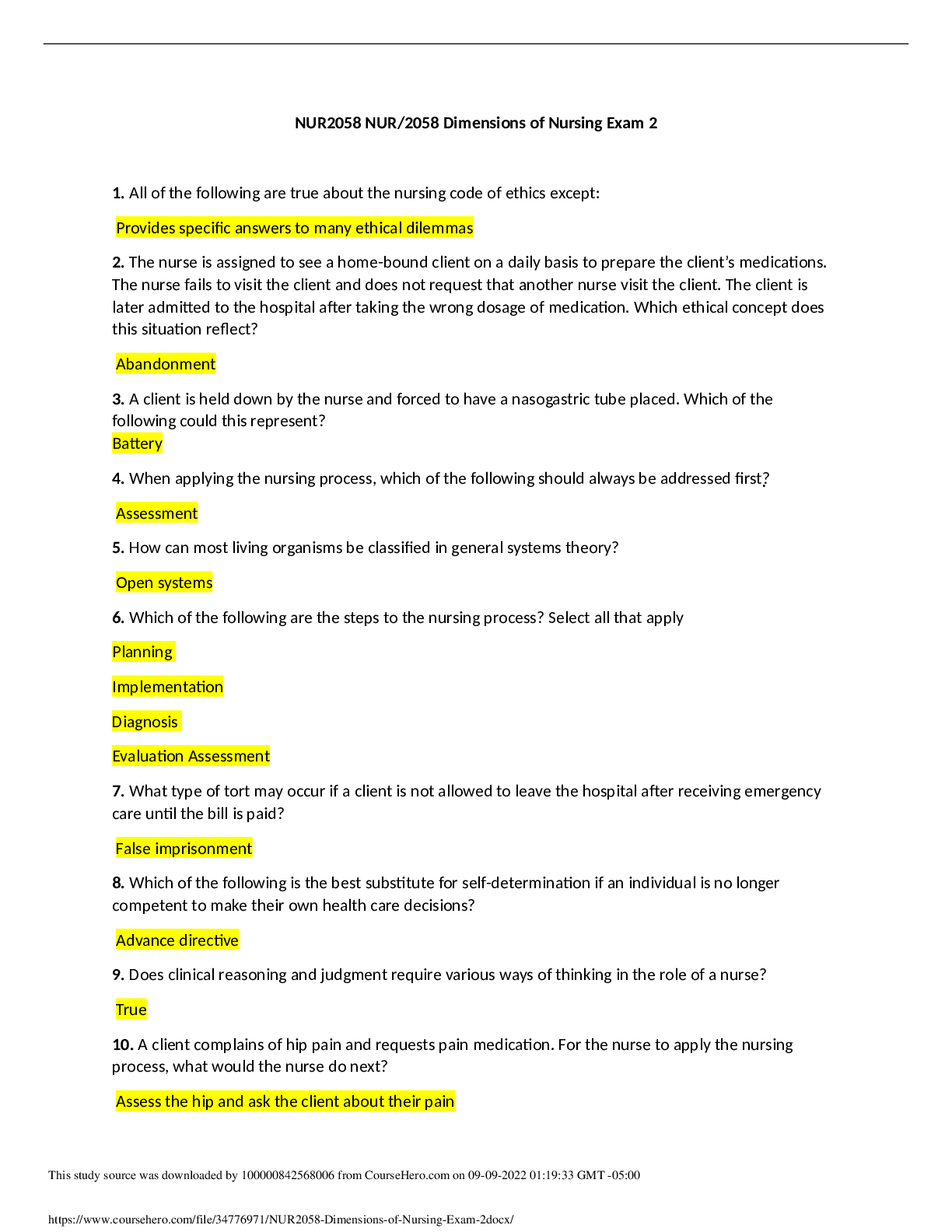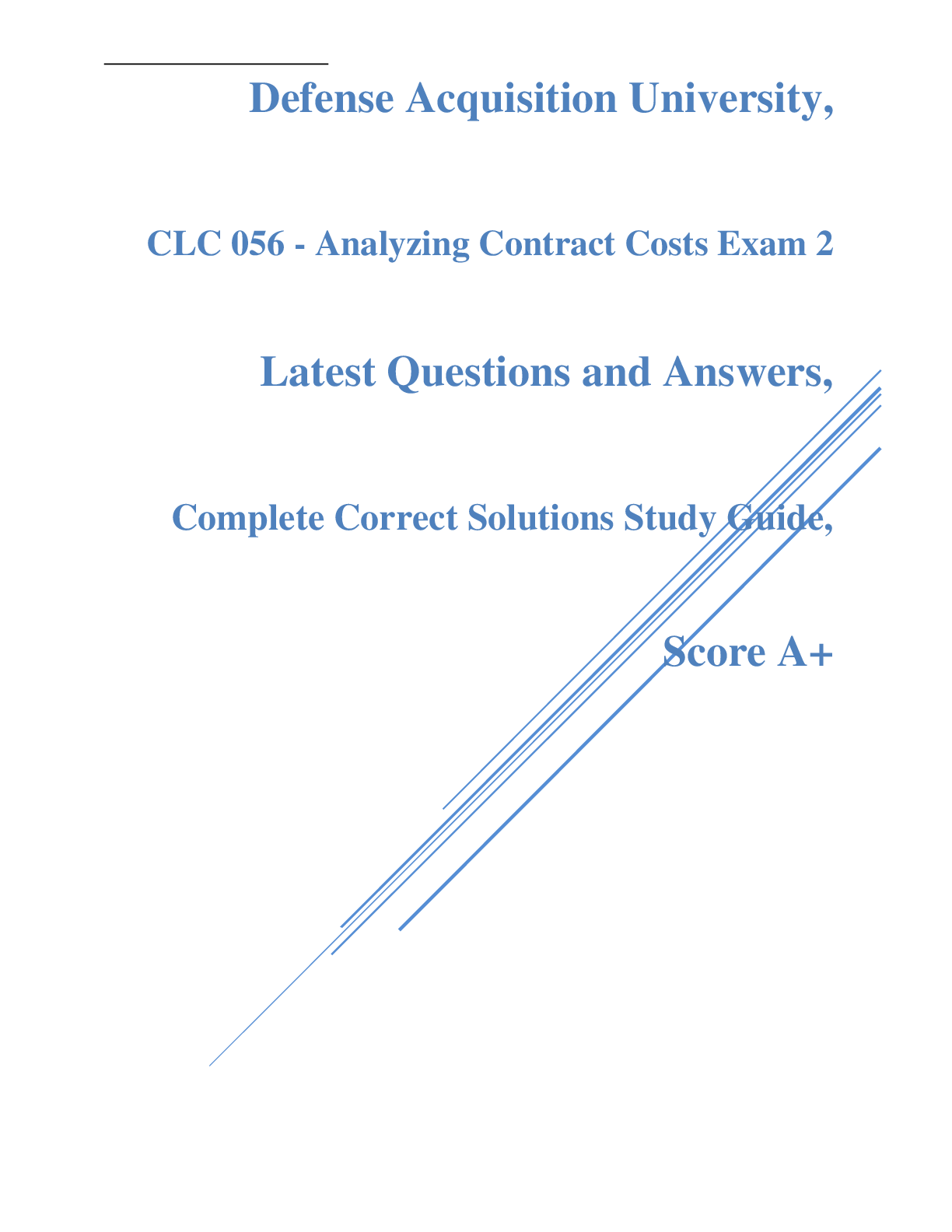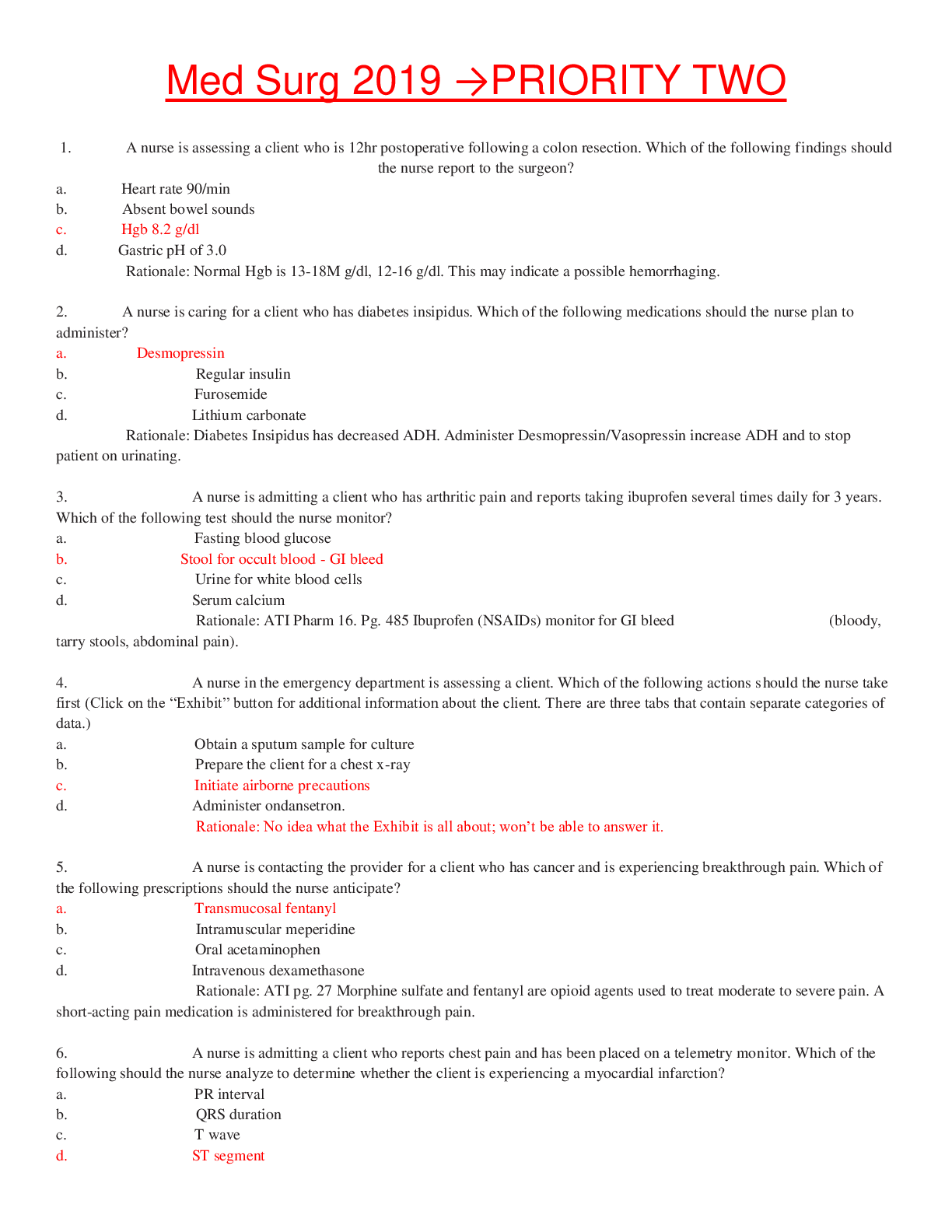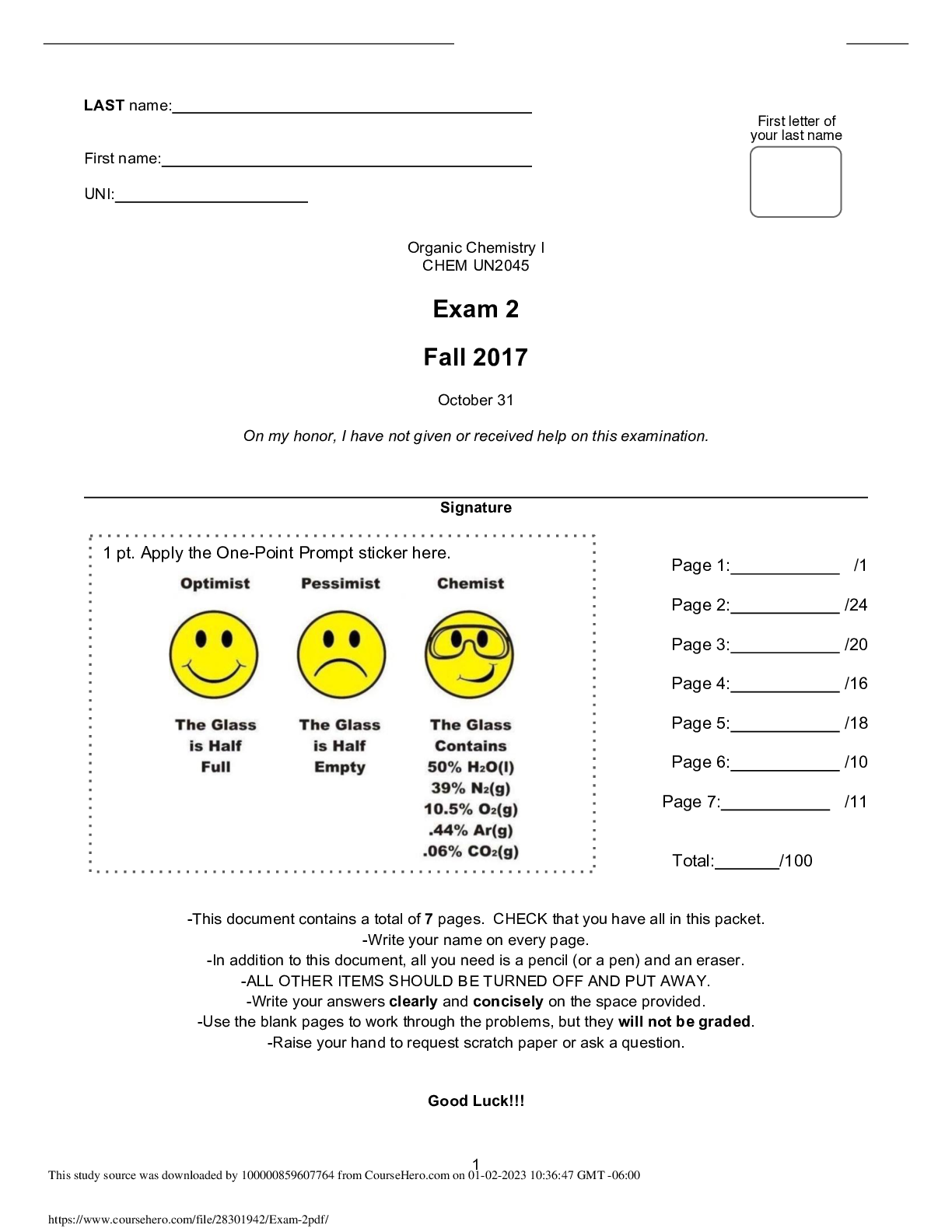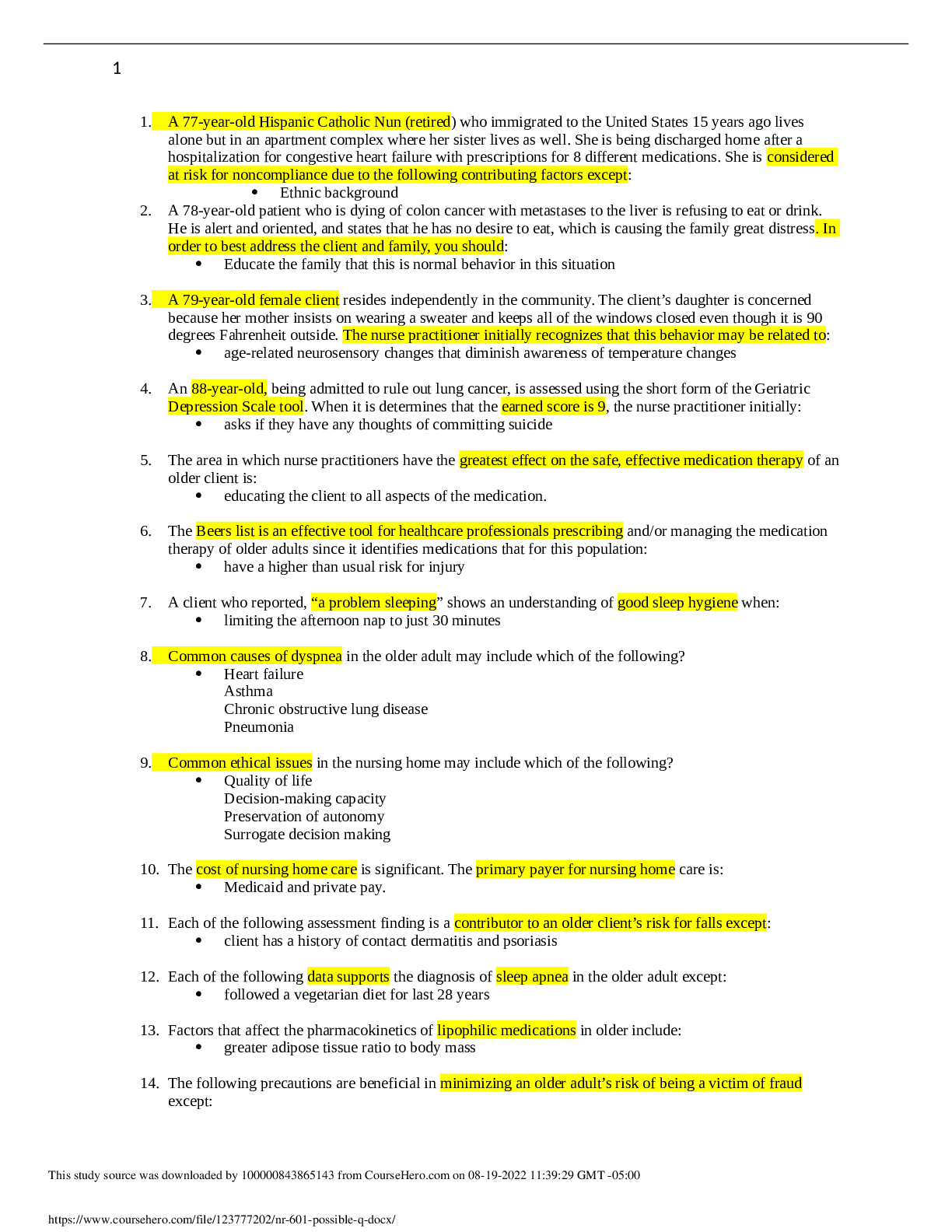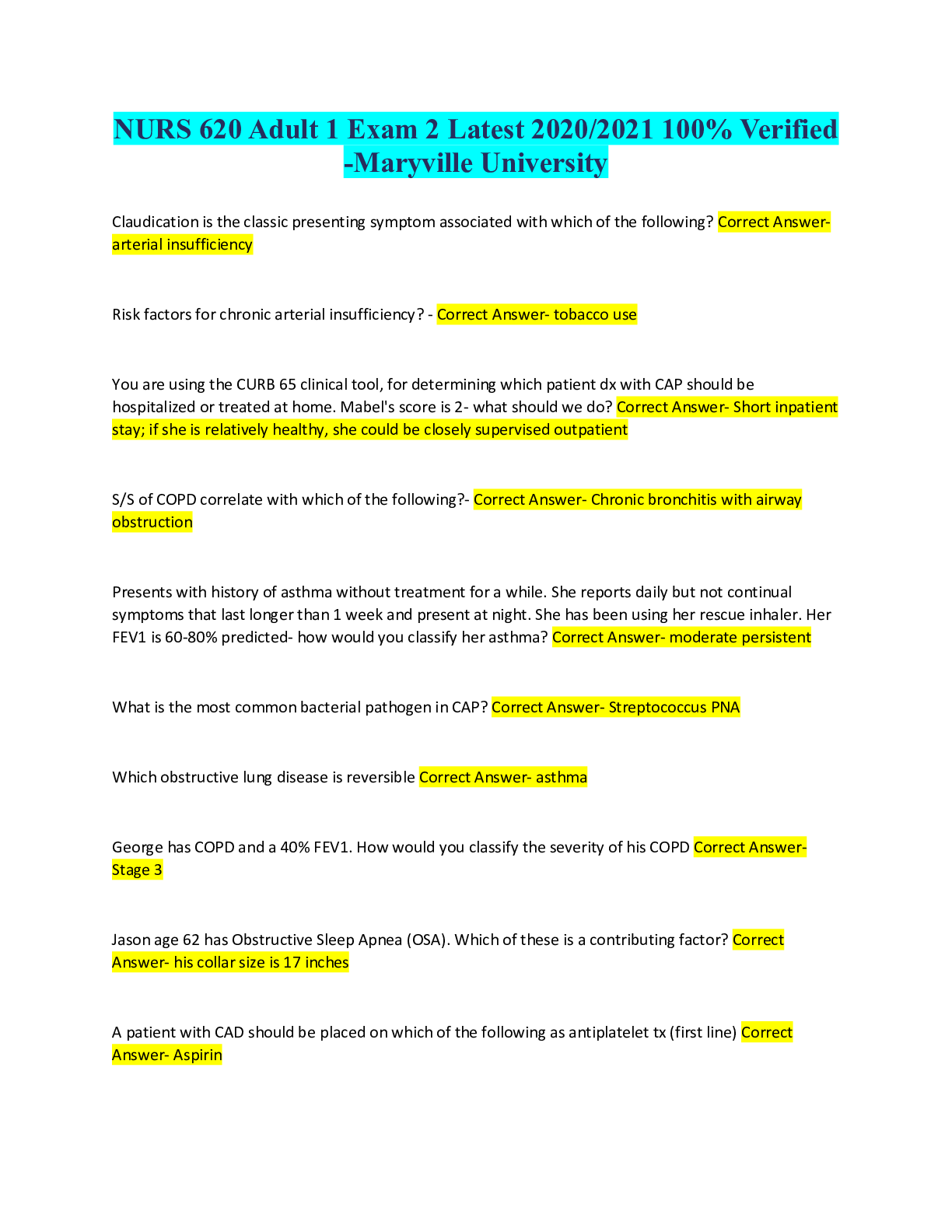*NURSING > QUESTIONS & ANSWERS > MDC IV Exam 2 Latest 2022 Update Graded A+ (Rasmussen college) (All)
MDC IV Exam 2 Latest 2022 Update Graded A+ (Rasmussen college)
Document Content and Description Below
MDC IV Exam 2 Latest 2022 Update Graded A+ (Rasmussen college) The nurse is caring for a patient who is admitted to the ED with burns to the lower legs and hands. During the initial management, wha... t is the priority nursing care? A. Assess and treat pain. B. Evaluate airway and circulation. C. Place two IV catheters and initiate fluid resuscitation. D. Use the rule of nines to estimate percent of body surface area burned. It has been 12 hours since a patient has been admitted for burns to the face and neck with associated inhalation injuries. The patient had been wheezing audibly and the wheezing has now stopped. What nursing action is appropriate? A. Check the patient's Spo2 level. B. Notify the physician immediately. C. Re-assess breathing in 1 hour. D. Document improvement in patient's condition. A patient has been receiving dressing changes with silver sulfadiazine (Silvadene) for burn injuries over both lower arms. The nurse notices that the patient's white blood cell count has dropped significantly over the past 4 days. How does the nurse interpret this finding? A. Electrolyte imbalance B. Infection is improving C. Impending kidney disease D. Possible allergic reaction to silver sulfadiazine (Silvadene) Which patient is at greatest risk of developing acute respiratory distress syndrome (ARDS)?A. 24-year-old male admitted with blunt chest trauma and aspiration B. 56-year-old male with a history of alcohol abuse and chronic pancreatitis C. 72-year-old male post heart valve surgery receiving 1 unit of packed red blood cells D. 82-year-old female on antibiotics for pneumonia A patient is being discharged to home on warfarin (Coumadin) therapy to manage an acute pulmonary embolism. Which patient response indicates a need for further teaching by the nurse? A. "I should limit my alcohol consumption." B. "I should eat more green leafy vegetables like spinach." C. "I should take the medication at the same time every day." D. "I should make a doctor's appointment for weekly blood draws." A patient in acute respiratory failure is classified as having ventilatory failure. The nurse understands that which finding is a potential cause of ventilatory failure? A. Pulmonary edema B. Hypovolemic shock C. Pulmonary embolus D. Opioid analgesic overdose A 37-year-old male is admitted with a severely abscessed tooth, BP 90/42, HR 136, RR 28, Spo2 90% on room air, temperature 38.7º C. The nurse suspects that the patient has developed sepsis. What is the priority nursing intervention? A. Insert an indwelling urinary catheter. B. Initiate intravenous fluid resuscitation. C. Obtain a complete chemistry for laboratory analysis. D. Administer prescribed antibiotics prior to blood cultures.When assessing a patient for shock, the nurse knows that which symptom is the earliest manifestation of shock? A. Anuria B. Increased heart rate C. A decrease in respiratory rate and depth D. A change in both systolic and diastolic blood pressure Which clinical manifestations does the nurse recognize that indicates worsening in the condition of a patient in the refractory phase of shock? A. Warm, flushed skin B. Urine output of 20 mL/hr C. Increasing respiratory rate D. Bleeding, oozing from IV sites *Diminished breath sounds* ▪ also asymmetry paradoxical chest movement = flail chest (when pt inhales the good side goes out and the bad side goes in, like a see saw)* fever = sepsis decrease urinary output = a good measure of perfusion/kidneys (ideally 30 mL/hr; formula = 0.5/kg/hr) Correct Answer- Clinical manifestation of a Pneumothorax include Fever Paradoxical chest movement Diminished breath soundsDecrease urinary output ET tube...patient needs to be intubated Correct Answer- Treatment for flail chest pain! teach them to splint when coughing and use pain meds rib fractures can lead to hypovolemic shock! Correct Answer- Uncomplicated rib fracture - most common symptom Tension Pneumothorax - first thing you do is a needle thoracotomy (aka needle decompression) then chest tube Correct Answer- Tracheal deviation is a clinical manifestation of: Rib fracture Tension Pneumothorax ARDS Septic shock ground glass appearance Correct Answer- What does ARDS look like on a chest x-ray prone positioning & PEEP Correct Answer- Treatment for ARDS Assess the client respiratory status every 4 hours Correct Answer- All the following are interventions for a client on a ventilator, except: Have an Ambu Bag available at bedside Suction as needed Assess the client respiratory status every 4 hours Prevent pressure ulcers around the mouth for the ETTblood cultures then antibiotics (broad spectrum) lactate level fluids!!! NS or LR usually 30 mL/kg rapid infusion or vasoconstrictors (epinephrine, norepinephrine, dopamine, vasopressin...side effects = ischemia, hypertension) Correct Answer- Septic shock interventions infection prevention Correct Answer- Patient education for septic shock pneumothorax and hypotension Correct Answer- Complications of PEEP obstruction excessive secretions - listen to lungs kinked tubing increased pulmonary pressures Correct Answer- Causes of high pressure alarms leak - check that the balloon is inflated Correct Answer- Causes of low pressure alarms Lovenox (enoxaparin) Correct Answer- What medication are you immediately put on if you are on mechanical ventilation? Stridor - this can be caused by anaphylaxis, obstruction, inhalation injury; when the stridor is no longer heard this might mean the airway is closed! Correct Answer- Clinical manifestations of a pulmonary embolism include all of the following except: Decreased O2 Sat Hypotension Shortness of Breath-sudden StridorD-dimer spiral CT with contrast ABGs CT with contrast CT angiogram Correct Answer- PE diagnostics Hypovolemic shock Correct Answer- A weak, thready pulse is a clinical manifestation of: Hypovolemic shock Inhalation injury Fluid volume excess DIC True Correct Answer- An escharotomy involves a surgical incision though the hardened dermal layer of the skin. True False 36 (4.5+4.5+9+9+9) Correct Answer- Rule of 9's: Left arm, left leg, and upper chest 9 27 18 36 Supine with elevated legs Correct Answer- A client with hypovolemic sho [Show More]
Last updated: 1 year ago
Preview 1 out of 16 pages
Instant download
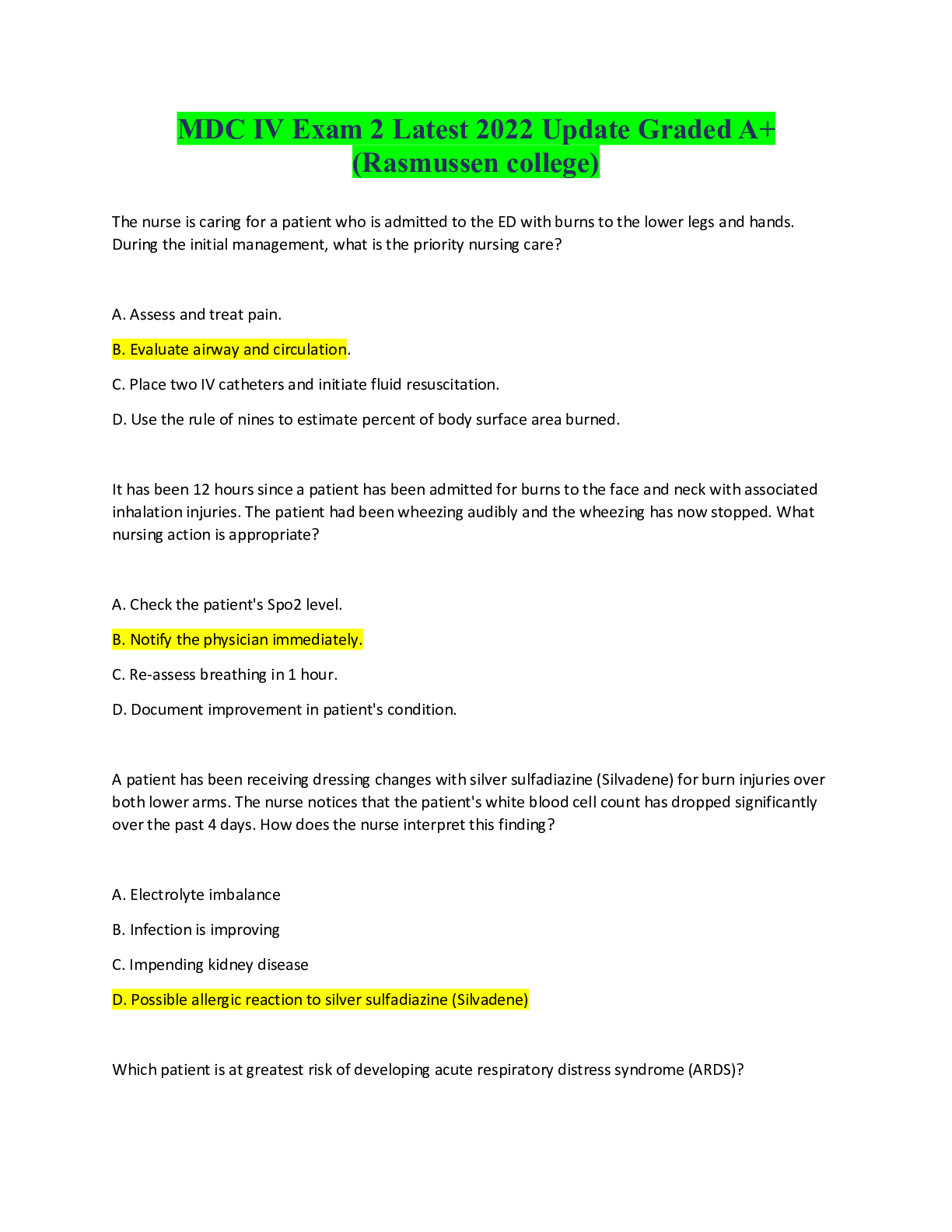
Buy this document to get the full access instantly
Instant Download Access after purchase
Add to cartInstant download
Reviews( 0 )
Document information
Connected school, study & course
About the document
Uploaded On
Sep 14, 2022
Number of pages
16
Written in
Additional information
This document has been written for:
Uploaded
Sep 14, 2022
Downloads
0
Views
74












 (1) answers.png)
